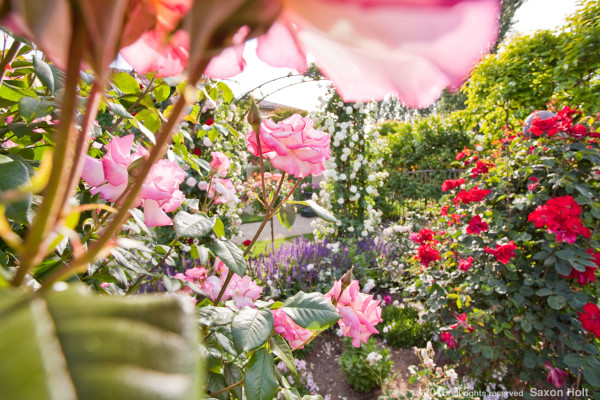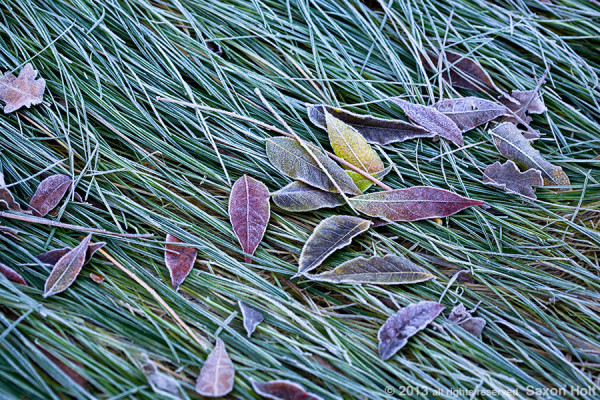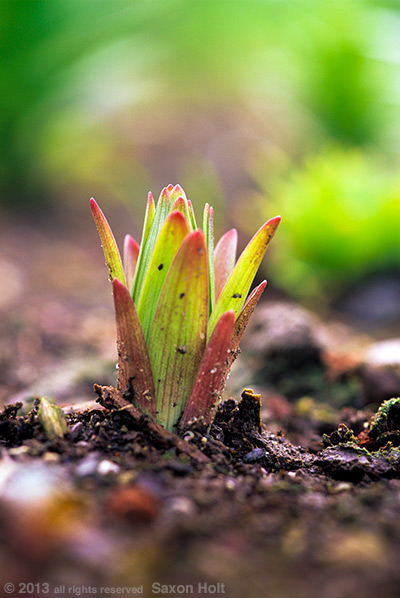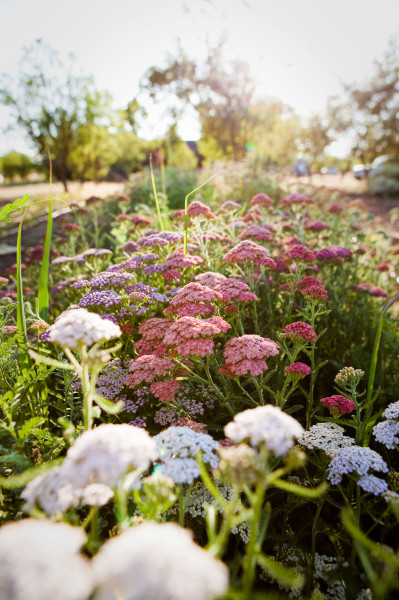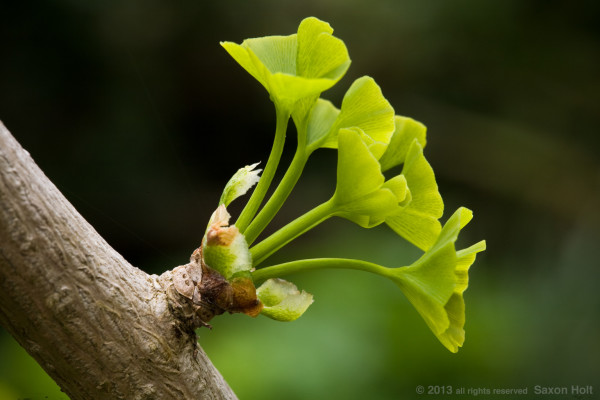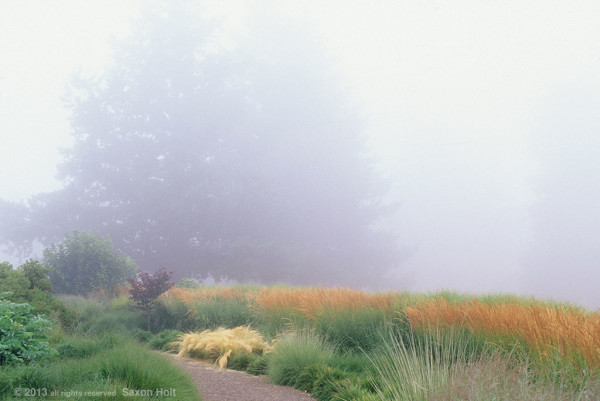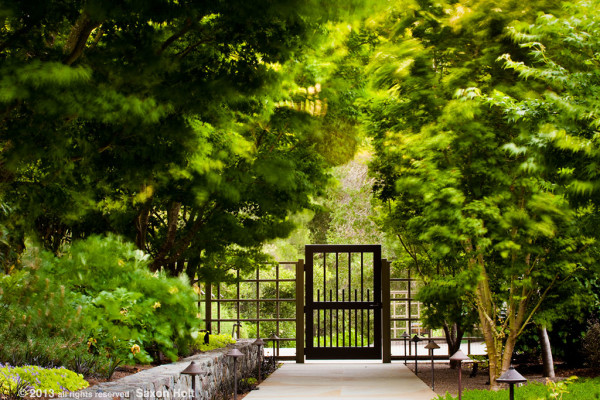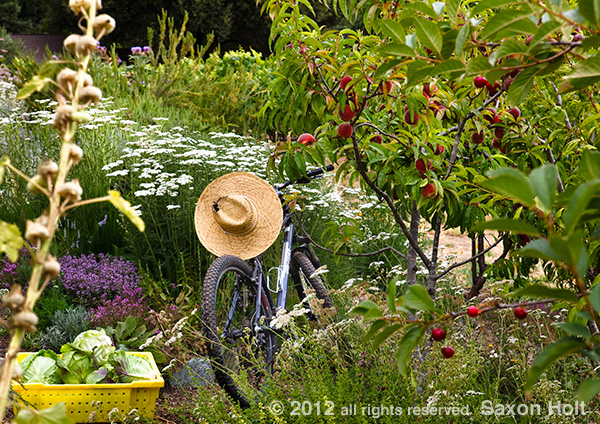An enduring motif of garden photography is the seasons. The season, its weather and mood is, often unconsciously, part of every story and in every photo.
When we are within a garden, excited by what we see, it is easy to forget the multi-sensory experiences that create the mood we feel. Sounds, fragrance, light, the weather, all contribute to the physical experience, to how we absorb the garden and how we feel.
It is a challenge to capture these sensory impressions in a photograph, but by working with the season we can challenge ourselves toward telling better stories.
When I saw this pattern of frosty leaves, I was cold, the ground was crunchy. So I let the photos stay bluish and tried to capture a bit of the brittleness of the grass. It’s winter (in Zone 9…).
In telling the garden’s story, we have talked here about the space it occupies, the hardscape that defines that space, and now something less tangible – mood, and how the season and weather create mood. More often than we realize, the very season of the garden contributes to how we see it.
To a gardener it may seem obvious that roses mean summer, daffodils spring, apples must mean autumn, bare trees are winter, etc. This is obvious to you but perhaps not to the viewer. And it may be so obvious to you, it is easy to overlook the potential for garden photography.
In spring, for instance, you might look for signs of rebirth. There is energy in the air, in the mood.
Looking for spring, I found this lily sprouting out of the ground, something not quickly seen. But once the eye is attuned to the mood, it begins to see possibilities.
So, for this next lesson for the PhotoBotanic Garden Photography Workshop, we look at capturing mood and seasons, how it makes you feel – and why.
The garden exists in time, it changes every day, all day. You know this as a gardener; so, think like a gardener with the camera. Think about what is special in the moment in the garden in front of you. How does it relate to time and season ? Remember that taking a picture is capturing a moment, a slice of time. That slice exists in the season.
Of course it is hard to always capture the seasonal moment in a photo but simply being aware that our visual sensations are affected by all the sensory input around the garden will help us see more fully. When we compose our pictures, we will be more mindful of the larger story.
The moment of clicking the shutter is transitory, it is unique, and it exists in a mood. For this exercise acknowledge that the season is affecting the mood in the garden. Allow yourself to see the moments in context of a larger story.
There is no real ‘how-to’ I can teach about this concept, no rules or technique, which is why this lesson is in the form of an assignment. Give yourself the challenge of making photos while conscious of the mood and season. Be aware of your own mood.
When I first published the Gingko leave bud in a Gardening Gone Wild Post “Capturing Spring” the mood of exploding pubescent energy was exhilaration. “I can almost imagine the leaf petioles drawn down through the bud, linked by delicate synapses through the branch into the tree’s trunk and down into the roots – sucked into, connected to the earth itself, their expression of birth being the earth in bloom.”
Spring made it possible to tell that story, to see that picture.
In California, autumn brings rain. I went out one rainy day to make some pictures.
The raindrops on the grape vine reveals the weather, the red leaf reminds of the season.
Fog is often a blessing for a garden photographer but I remember thinking to myself “Be aware of what you ask for” on this morning of pea soup fog.
But by making the fog be the story rather than fighting it, I was able to capture the mood of that garden in that moment.
Wind can also create problems for garden photography. But on this day in this next garden photo I used the wind in context of the solid garden gate to reveal the wind, to show the weather.
Wind was the story, “Wending and Wind“, and forced me to think about how I was going to tell it.
Most of the time the weather does not force you see it. The season simply permeates the senses while the eyes see the beauty. But the story of the beauty is inextricably part of the season.
Summer is a languid time, of being outdoors, of harvest – of taking a break from that harvest.
This is an ‘only in summer’ photo, yes ? It seems obvious, but I found the photo only after feeling the mood and fully seeing what was going on.
As you go out to take photos, and put into practice the lessons here, Think Like a Gardener, put yourself in the mood to accept the season, to look for those photos that the gardener in you knows could only be taken that day. Whether it is summer, fall, winter, or spring; whether a rainy day, crisp, or foggy; no matter the day, there will be something unique about the garden that day.
On this late winter day in Filoli gardens the trees are still bare, still obviously winter. But there is the faintest blush of green on some of the trees. On some of the cherry trees there is a faint blush of pink blossom. On this day the seasons are changing. That is the mood. That is the story the garden gave me.

